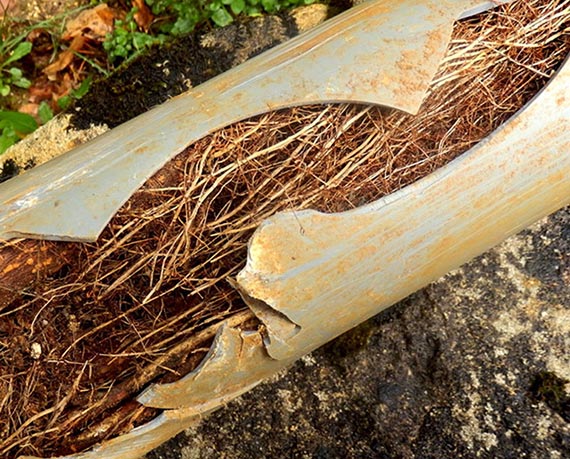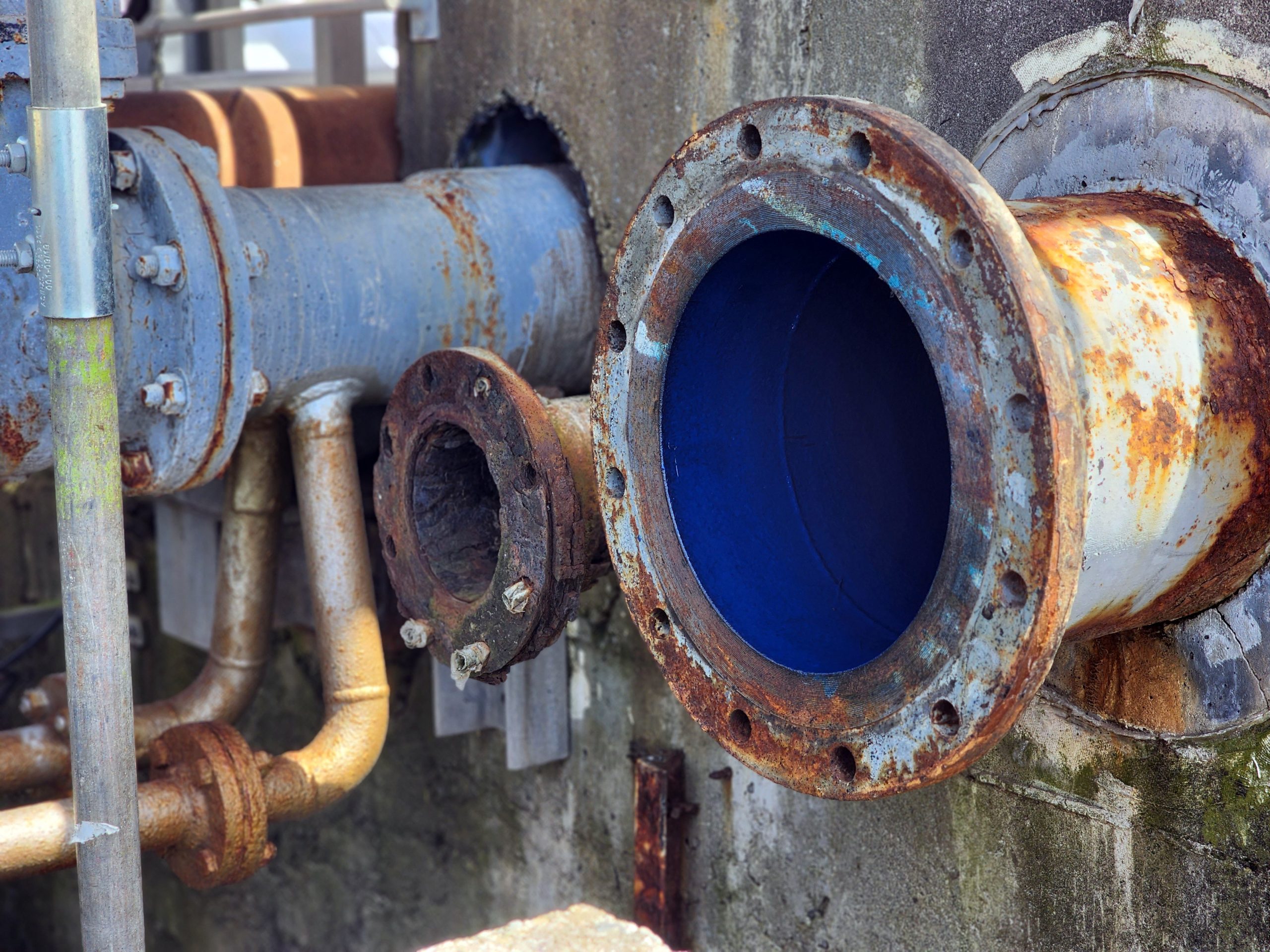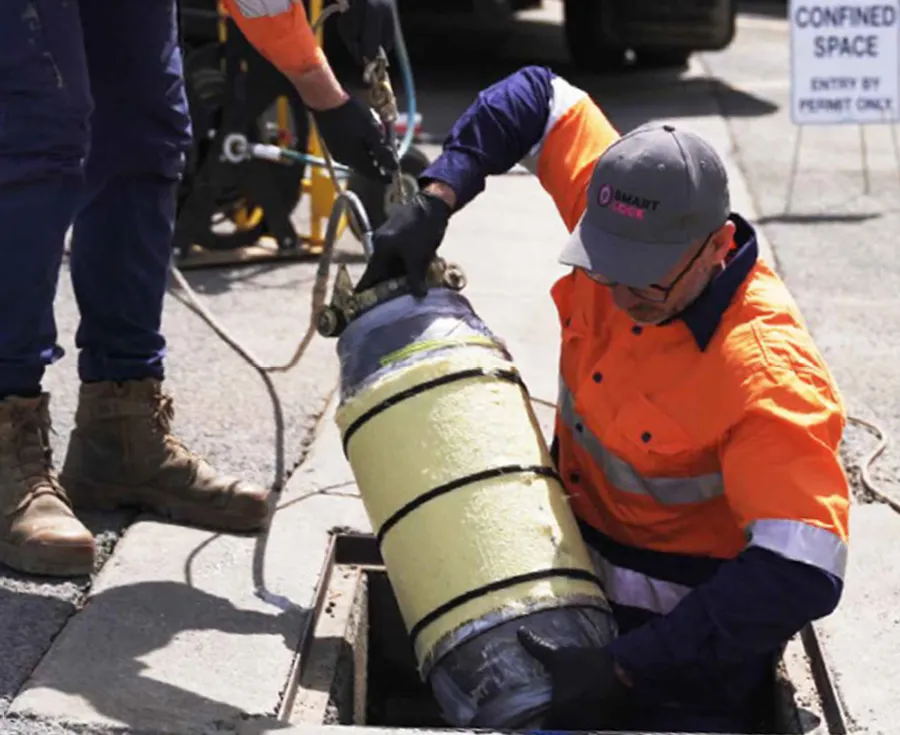Being in the pipe relining business, Nuflow gets lots of emails and calls from people asking how to clear tree roots from drain pipes. In this article we share one of those emails as well as the advice and information we gave Rose about what can be done when these clever – but unwanted ‘vegetative visitors’ make their way into plumbing pipes.
An email to Nuflow:
Dear Nuflow,
RE: TREE ROOTS IN SEWER LINE
I wondered if you can give me some advice about how I can get rid of tree roots in a sewer line please. My best friend on hot summer afternoons is the beautiful, big fig tree on the western (sunny) side of my house. But when I saw my neighbor digging holes all over his front yard, and heard the choice language he and the plumber were using in relation to my tree, I knew the tree and I were both in trouble.
It seems that yes, my fig tree had found a tiny crack in the neighbour’s sewer pipe and had set up camp. Sadly, the new gig was just so perfect the web of roots had grown to an astonishing size and was completely blocking their sewer system.
My neighbor stopped short of wanting me to send the tree to the great tree cemetery in the sky (perhaps because his carport shade-sail was chained to it and with the tree gone it would cost him a motza to have the whole thing reconfigured) but we did have to share the price of having the roots ground out and cleared away.
I’ve since read up about thirsty little fig trees (and how persistent they can be if they’re living anywhere near sewer pipes) and I feel certain they will grow back. I don’t want to be paying to clear roots from the drain pipe year after year, so I wondered whether there was any permanent fix.
Many thanks for any advice,
Rose (surname withheld)
Brisbane. Qld
__________________
Unfortunately this scenario is incredibly common. All over the western world, plumbing systems are one of the first things to go down in new housing estates. Then the homes are built and landscaped, properties are bought and owners move in. Over the years residents add a few cute little plants here and there (often not giving a thought to things like tree roots in sewer lines) and then they move on. New owners move in, they add a few more plants (by now any plumbing plans are long gone) and so it goes until someone is dealing with the issue of having to clear roots from drain pipes.
Queensland, in particular, is a fairly dry place and during the last four or five years of drought many yards started to look like dust bowls. Established trees were doing it tough too and in order to survive they’re genetically programmed to send out the troops in search of supplies. Tiny exploratory roots travel through the soil in search of water, nutrients and oxygen and truth be told they should be congratulated on how cleverly they accomplish their task. They seem to sense where water and nutrients can be found and make a beeline for our house slabs, swimming pools and underground pipes. Once there, they can worm their way through the tiniest of cracks, then grow quickly to block a sewer pipe’s flow altogether.
Understandably, few homeowners see the magic and wonder of nature when they’re confronted with tree roots in their sewer line. They see it as more of an invasion of ‘their’ property and all they can think of is the hefty repair bill they’ll most likely have to pay.
In fact a quick scan of the advice and review forums on the internet suggest there are plenty of people who believe the only good tree is a dead tree when it comes to plantings within 20 metres of sewer systems and pipes. There is a smorgasbord of suggestions about how to get rid of roots in sewer lines, a few of which we’ve summarised at the end of the article.
How do tree roots enter pipes?
Even the tiniest little crack in a sewer or water pipe can be seen as an invitation for thin root fibres to wiggle inside. Older porcelain or earthenware pipes are renowned for having small cracks and even if they’re not wide enough to be causing service issues they can be all a tiny root needs to force its way into where the ‘goodies’ are.
PVC (plastic) pipes are definitely more resistant to tree roots so long as there are no splits or cracks in the plastic and only if all the joins and joints have been totally and completely sealed when first installed. Herein lies the issue. Often in the pipe-laying stage of a new build apprentices will be left to do the gluing of sections of pipe. They put enough glue on to keep the pipes together, but sometimes little gaps remain. This, again, is the root system’s open door to the rest of the pipe 20 years later.
How can I clear roots from my drain pipe?
There are definitely those heroes who like the do-it-yourself options when it comes to plumbing. Perhaps digging up a stormwater drain at the root entry point, chopping up and poisoning (or sealing) the roots then replacing any broken pieces of pipe is an option if you’ve got nothing better to do with your weekend. You would need to keep in mind there could be issues over establishing exactly where (and in how many places) the roots are entering the pipe, however. You may have to do an awful lot of digging to be sure. Otherwise a CCTV inspection could tell you what you need to know. There is also the fact that it is not legal to do your own work on sewer pipes.
But if you’d rather be watching Netflix or throwing Frisbees with the kids, perhaps calling a professional is the way to go. Ensure you enlist the service of a reputable drain repair technician who has high quality CCTV equipment ( so you can see evidence of what is causing the blockage and establish entry point(s). You should also check that they can offer a range of alternatives for removing the roots (some equipment can damage certain types of pipes) and whether they can offer pipe relining if necessary (to prevent re-entry).
How can I stop tree roots getting into my sewer line for good?
Once the roots are cleared and the immediate problems resolved, there are four pathways you can take. They are:
- do nothing and be prepared for the roots to eventually grow back so you can go through the process again
- poison/remove the offending tree(s)
- re-route your water and waste systems so that they’re more than 20 metres from the thirsty tree(s)
- reline your pipes using advanced composite resins and a synthetic sleeve.
Do relined pipes prevent entry of tree roots in sewer lines?
International cricket bats, hockey sticks, plane bodies, rail-road tracks and even the rock-hard fillings dentists puts in our teeth today are made from composite resin compounds. Composite resin technology has also turned the plumbing world on its head with pipe repairs now possible without the need to dig. Known as trenchless technology, CIPP pipe relining involves impregnating a synthetic liner with composite resins, pulling the liner into place over damaged sections of pipe, and curing the resin to form a strong, new, seamless pipe inside the old one.
This new pipe is completely resistant to further tree root invasion and guaranteed to stay that way for up to 50 years.
For Rose, this was great news. With the tree roots having already been professionally removed, she and her neighbour were able to have the vulnerable areas of the pipe relined with CIPP composite resins. Her neighbour’s sewer system worked like a dream and Rose could go on enjoying her summers in the shade of her beautiful fig.
Home handyman ideas for clearing roots from drain pipes
But if the budget isn’t there right now to get the job done properly, here are a few suggestions we’ve gathered from those in the business to help you keep roots at bay. Whilst we don’t endorse or recommend any of these strategies (and all may have unforeseen negative impacts), in the interests of information-sharing and discussion we list them here.
Sodium chloride (Rock salt)
Hardware stores sell 20k bags for less than $10. At the end of the day put about a kilo of the salt into the toilet situated furthest down the sewer line (furthest away from the main line, which is usually out on the street). Follow this with a bucket of water and repeat the process four or five times (i.e. putting a total of about 5k down the sewer line). Try to avoid flushing any toilets in the house until lunch time next day. The salt should be strong enough to dry out the roots, which should eventually rot away. Of course the success of this strategy will depend on how extensive the root invasion is. Roots will grow back eventually, but the salt won’t damage the sewer system and it is an inexpensive, temporary fix.
Dishwashing liquid and concentrate weed killer
This option is more extreme. The dishwashing liquid will not hurt the sewer system at all, but depending on what type of weed killer you use there may be negative impacts. You should ALWAYS use biodegradable products to protect the environment. Perhaps ring the manufacturer to check that it is ok to go into sewer pipes.
Use about 400ml of cheap dishwashing liquid to 800ml weed killer. Mix together and leave for a few hours to ensure all the contents are completely bonded together. Again at night, pour the mixture into the toilet and flush (pressing the button a few times to ensure it goes all the way along the line). Try not to flush any toilets in the house again until midday the next day. The foam should coat the roots which will die. But be warned… the tree is highly likely to also die. This means there could be damage when it falls and possibly damage if the tree happens to be your partner’s favourite. So some prior discussion is advised.
Sulfuric acid
Again, not necessarily recommended in terms of your sewer system’s health, but some people (including some drain technicians) swear by a good dose of sulfuric acid once tree roots have been cleared. Sulfuric acid is highly dangerous, however, and full PPE should be worn when dealing with this product. Follow manufacturer’s directions and perhaps check with your plumber or local council that it will not damage your pipes.
Commercial products
There are various commercial products on the market which claim to be able to deter tree root entry. The problem is, that whilst they may kill the roots present at the time, they can do nothing to prevent future entry of tree roots in sewer lines, which means it would have to be an ongoing maintenance task (and expense).
And easiest of all. find out where the sewer line runs on your property before planting any new trees and shrubs.
If you’d like any more information about how to keep or clear tree roots from drain pipes at your place, contact Nuflow.




